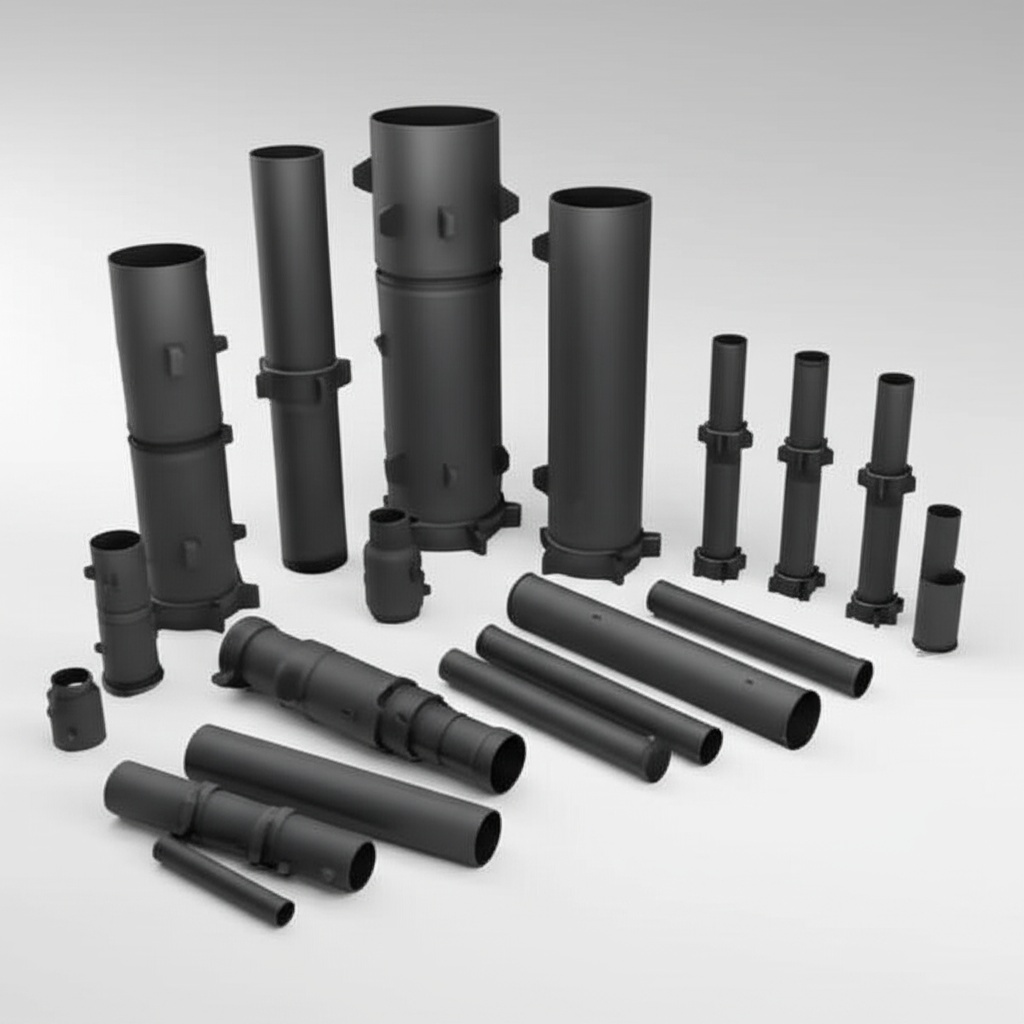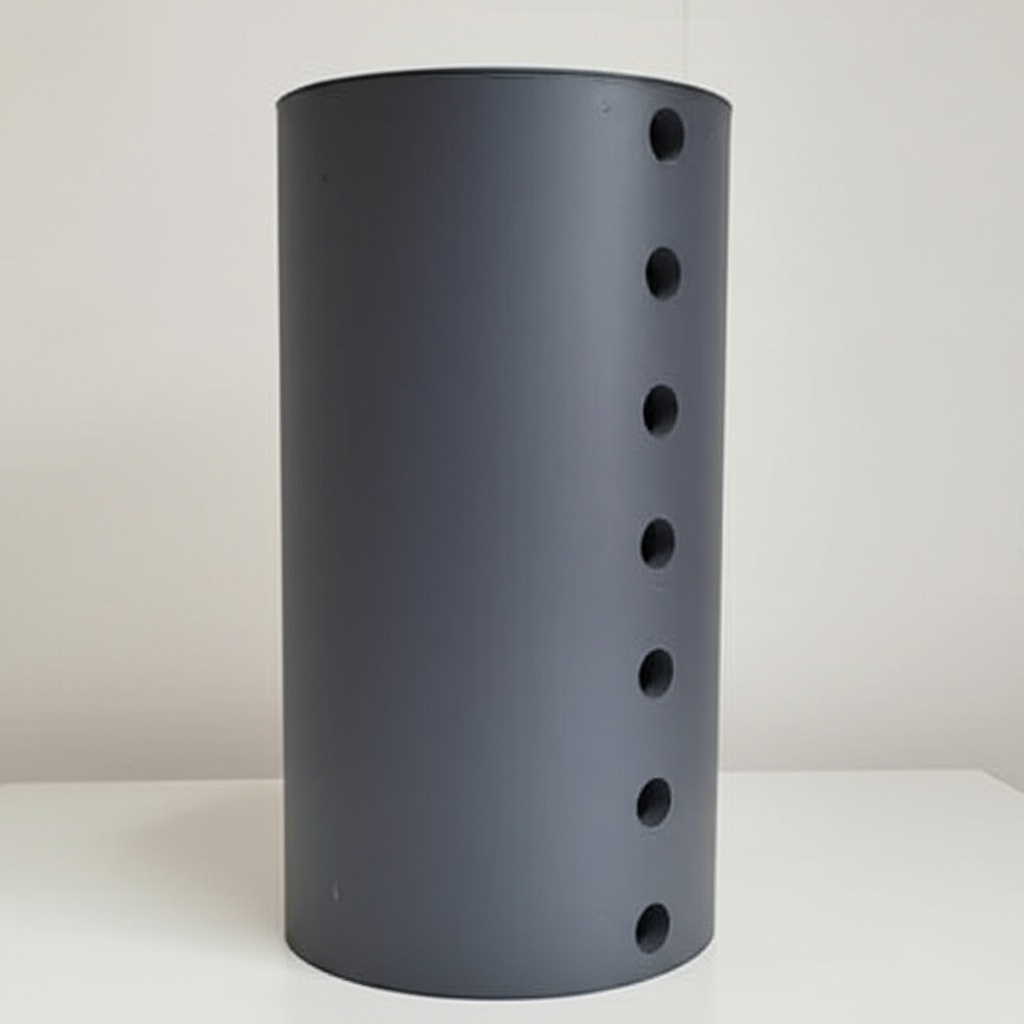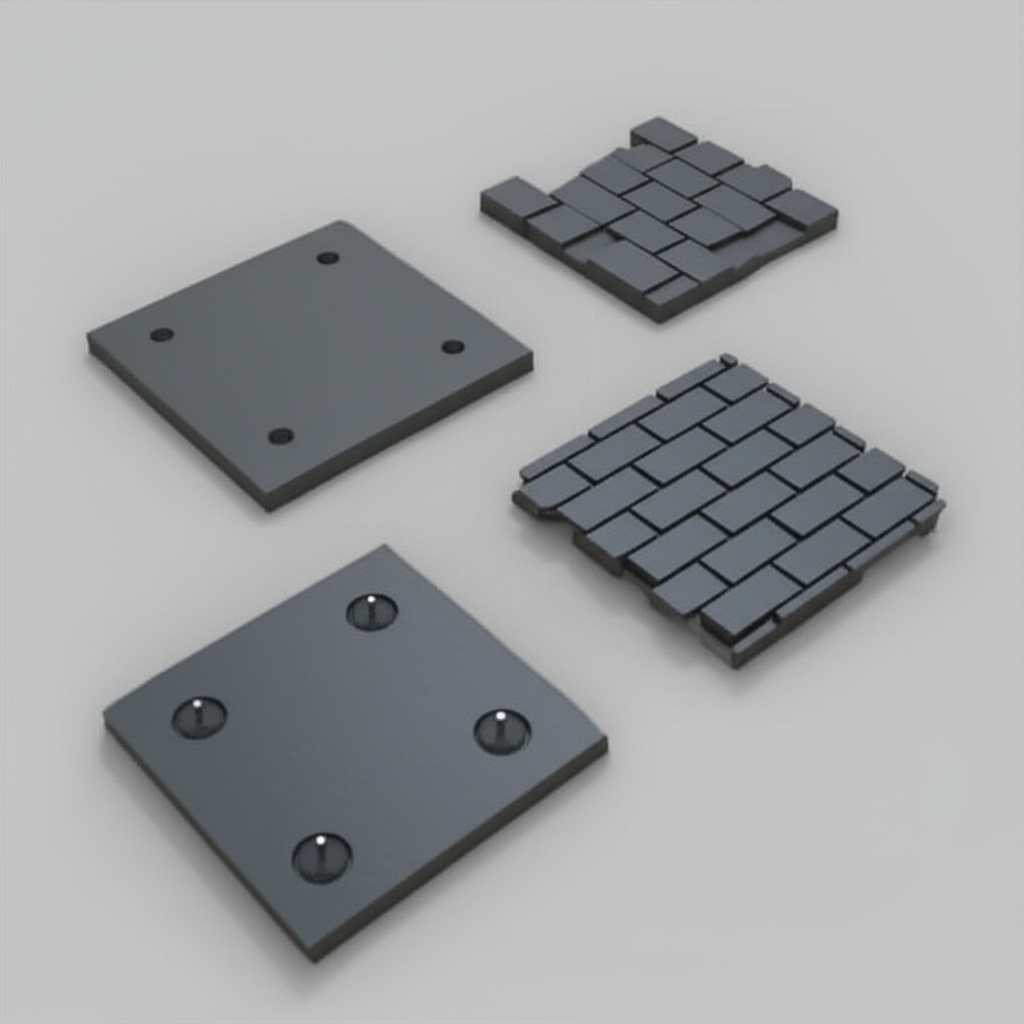SiC for Sale in Russia: A Buyer’s Resource

Share
SiC for Sale in Russia: A Buyer’s Resource
In the demanding landscapes of modern industry, where extreme temperatures, aggressive chemicals, and abrasive environments are the norm, ordinary materials simply won’t suffice. This is where silicon carbide (SiC) emerges as a true champion. Renowned for its exceptional properties, SiC is increasingly becoming the material of choice for high-performance industrial applications across a multitude of sectors, including those with critical needs in Russia.
This comprehensive guide is designed for engineers, procurement managers, and technical buyers actively seeking high-quality silicon carbide for sale in Russia. We will delve into the critical aspects of SiC, from its diverse applications and advantages to design considerations, supplier selection, and cost factors, ensuring you make informed decisions for your custom SiC requirements.
Main Applications for Custom Silicon Carbide
The unique combination of properties in silicon carbide makes it indispensable across a broad spectrum of industries. Its ability to withstand extreme conditions ensures reliability and longevity in critical systems. Here’s a closer look at where custom SiC products are making a significant impact:
- Semiconductor Manufacturing: SiC is vital for wafer processing equipment, furnace components, and susceptors due to its high purity, thermal shock resistance, and excellent thermal conductivity. It’s crucial for the production of next-generation power devices.
- Automotive Industry: Used in brake discs, clutch systems, and increasingly in electric vehicle (EV) power electronics for improved efficiency and thermal management.
- Aerospace: SiC components are employed in high-temperature engine parts, heat exchangers, and structural elements for their lightweight and high strength-to-weight ratio at elevated temperatures.
- Power Electronics: Essential for high-voltage and high-frequency applications like inverters, converters, and power modules, enabling smaller, more efficient, and more reliable systems.
- Renewable Energy: From solar panel manufacturing equipment to wind turbine components, SiC’s durability and thermal stability are key.
- Metallurgy: Used in furnace linings, crucibles, and refractory materials for its resistance to molten metals and high temperatures.
- Defense Contractors: Applied in ballistic protection, missile components, and high-performance optical systems due to its hardness and thermal properties.
- Chemical Processing: Ideal for pump seals, valve components, and heat exchangers due to its exceptional chemical inertness and corrosion resistance against harsh acids and bases.
- LED Manufacturing: Utilized in epitaxy equipment and heat sinks for its thermal management capabilities.
- Industrial Machinery: Found in wear parts, nozzles, bearings, and mechanical seals, significantly extending the lifespan of machinery in abrasive environments.
- Telecommunications: Employed in high-frequency electronic components and heat dissipation solutions.
- Oil and Gas Companies: Used in downhole tooling, pump components, and wear parts due to its resistance to abrasion and corrosive fluids.
- Medical Device Manufacturers: Certain applications leverage SiC for its biocompatibility and wear resistance.
- Rail Transportation Companies: Applied in braking systems and wear-resistant components.
- Nuclear Energy Companies: Utilized in high-temperature, radiation-resistant components within reactor systems.
Advantages of Custom Silicon Carbide Products
Choosing custom silicon carbide components offers a compelling array of benefits that directly address the rigorous demands of industrial applications:
- Extreme Hardness and Wear Resistance: SiC is one of the hardest materials known, second only to diamond, making it exceptionally resistant to abrasive wear and erosion. This extends component lifespan significantly.
- Superior Thermal Properties: High thermal conductivity enables efficient heat dissipation, critical for power electronics and high-temperature processing. Excellent thermal shock resistance prevents cracking under rapid temperature fluctuations.
- Exceptional Chemical Inertness: SiC resists attack from most acids, bases, and corrosive gases, making it ideal for harsh chemical processing environments.
- High Strength at Elevated Temperatures: Unlike many materials, SiC retains its mechanical strength and stiffness even at temperatures exceeding 1,500°C, crucial for high-temperature furnaces and aerospace applications.
- Low Thermal Expansion: Its low coefficient of thermal expansion contributes to dimensional stability across a wide temperature range, minimizing thermal stress.
- Lightweight: Despite its strength, SiC is relatively lightweight, which is advantageous for aerospace and automotive applications where weight reduction is critical.
- Electrical Properties: SiC can be engineered to be an electrical insulator or a semiconductor, offering versatility for different electrical applications.
Recommended SiC Grades and Compositions
The performance of silicon carbide can vary significantly depending on its manufacturing process and composition. Selecting the correct grade is paramount for optimal performance in specific applications.
| SiC Grade/Type | Description | Key Properties & Applications |
|---|---|---|
| Reaction-Bonded SiC (RBSC) | Produced by infiltrating a porous SiC preform with molten silicon, which reacts with free carbon to form additional SiC. | High strength, excellent wear resistance, good thermal conductivity. Commonly used for mechanical seals, nozzles, and large structural components due to its near-net-shape capability. |
| Sintered SiC (SSiC) | Manufactured by sintering fine SiC powder with non-oxide additives at very high temperatures, resulting in a dense, fine-grained material. | Extremely high hardness, excellent corrosion resistance, high purity. Ideal for semiconductor components, high-performance bearings, and body armor. |
| Nitride-Bonded SiC (NBSC) | SiC grains bonded by a silicon nitride matrix. | Good thermal shock resistance, excellent creep resistance, moderate strength. Suitable for kiln furniture, refractory components, and industrial furnace parts. |
| Chemical Vapor Deposited (CVD) SiC | Produced by the chemical reaction of gaseous precursors at high temperatures, forming a dense, high-purity coating or freestanding part. | Exceptional purity, superior corrosion resistance, high density. Used in semiconductor processing equipment (e.g., susceptors), mirror optics, and high-purity components. |
Design Considerations for SiC Products
Designing custom silicon carbide components requires careful consideration to leverage the material’s strengths and mitigate potential challenges. Early collaboration with your SiC manufacturer is crucial.
- Geometry and Wall Thickness: SiC is a hard and brittle material. Avoid sharp internal corners, abrupt changes in cross-section, and very thin walls, as these can create stress concentrations. Radii should be generously applied where possible.
- Holes and Features: Drilling and machining SiC after firing is challenging and costly. Design to incorporate features during the green (unfired) state whenever possible.
- Tolerances: While SiC can achieve high precision, specifying overly tight tolerances unnecessarily increases costs. Understand the manufacturing capabilities for the chosen SiC grade.
- Stress Points: Identify potential stress points in the application and design to distribute loads evenly. Consider finite element analysis (FEA) for complex geometries.
- Assembly and Joining: Account for methods of joining SiC components to other materials. Mechanical fastening, brazing, or adhesive bonding are common, each with specific design implications.
Tolerance, Surface Finish & Dimensional Accuracy
The precision of custom silicon carbide parts is a key factor in their performance. Achieving specific tolerances and surface finishes depends on the SiC grade and manufacturing processes.
- Achievable Tolerances:
- As-fired/Net-shape: For reaction-bonded SiC, tolerances can be relatively tight for net-shape parts (e.g., $pm 0.5%$ or $pm 0.2$ mm, whichever is greater).
- Machined: For parts requiring higher precision, post-sintering grinding and lapping can achieve tolerances down to microns (e.g., $pm 0.005$ mm or tighter for critical dimensions).
- Surface Finish Options:
- As-fired: Typically ranges from a matte to a smooth finish, depending on the material and process.
- Ground: Provides a finer surface finish (e.g., $R_a$ 0.4-1.6 $mu$m).
- Lapped/Polished: Achieves exceptionally smooth surfaces (e.g., $R_a < 0.1 mu$m), critical for seals, bearings, and optical applications.
- Dimensional Accuracy: High dimensional accuracy is achievable, particularly with secondary machining operations. This is crucial for components that require precise fitment or specific flow characteristics.
Post-Processing Needs
While SiC is an incredibly robust material, specific post-processing steps can further enhance its performance, longevity, or functionality.
- Grinding and Lapping: Essential for achieving tight tolerances and superior surface finishes, especially for sealing surfaces or precise mechanical components.
- Polishing: For optical applications or where extremely low friction is required.
- Sealing/Impregnation: For certain porous grades (like some RBSC), impregnation with resins or metals can enhance impermeability.
- Coating: While SiC is highly resistant, specific coatings (e.g., CVD SiC coatings) can provide even higher purity or enhanced surface properties for specialized applications like semiconductor processing.
- Joining: Brazing, diffusion bonding, or mechanical fastening methods are used to integrate SiC components into larger assemblies.
Common Challenges and How to Overcome Them
While silicon carbide offers tremendous advantages, working with it presents specific challenges that can be overcome with expert knowledge and proper manufacturing techniques.
- Brittleness: SiC is inherently brittle. Designs must avoid sharp corners and concentrated stress points. Careful handling during manufacturing and assembly is crucial.
- Machining Complexity: Its extreme hardness makes conventional machining difficult and expensive. Near-net-shape manufacturing processes and advanced grinding techniques (diamond grinding) are employed.
- High Sintering Temperatures: Producing dense SiC requires very high temperatures, adding to manufacturing costs and requiring specialized equipment.
- Thermal Shock (Mitigation): While SiC has good thermal shock resistance, extreme and rapid temperature changes can still cause failure. Proper design and material selection for the specific thermal cycling conditions are vital.
- Cost: Custom SiC components can be more expensive than traditional materials. However, their extended lifespan and superior performance often lead to a lower total cost of ownership.
How to Choose the Right SiC Supplier
Selecting a reliable and experienced silicon carbide supplier is paramount to the success of your project. Look for partners who demonstrate technical expertise and a commitment to quality.
- Technical Capabilities: Assess their ability to work with various SiC grades, their manufacturing processes (sintering, reaction bonding, CVD), and their machining capabilities (grinding, lapping).
- Material Options: Ensure they offer the specific SiC grades and compositions suitable for your application.
- Quality Certifications: Look for ISO certifications (e.g., ISO 9001) and adherence to industry standards, indicating a robust quality management system.
- Engineering Support: A strong supplier will offer design assistance, material selection guidance, and problem-solving expertise.
- Customization Experience: Verify their track record in producing complex, custom geometries and handling challenging specifications.
- Supply Chain Reliability: For buyers in Russia, understanding the supplier’s logistics and ability to deliver consistently is key.
Speaking of reliable supply, it’s worth noting the global epicenter of silicon carbide customizable parts manufacturing. Here is the hub of China’s silicon carbide customizable parts factories. As you are aware, the hub of China’s silicon carbide customizable parts manufacturing is situated in Weifang City of China. Now the region has been home to over 40 silicon carbide production enterprises of various sizes, collectively accounting for more than 80% of the nation’s total silicon carbide output.
We, Sicarb Tech, have been introducing and implementing silicon carbide production technology since 2015, assisting the local enterprises in achieving large-scale production and technological advancements in product processes. We have been a witness to the emergence and ongoing development of the local silicon carbide industry.
Based on the platform of the national technology transfer center of the Chinese Academy of Sciences, Sicarb Tech is part of Chinese Academy of Sciences (Weifang) Innovation Park, an entrepreneurial park that collaborates closely with the National Technology Transfer Center of the Chinese Academy of Sciences. It serves as a national-level innovation and entrepreneurship service platform, integrating innovation, entrepreneurship, technology transfer, venture capital, incubation, acceleration, and scientific and technological services.
Sicarb Tech capitalizes on the robust scientific, technological capabilities and talent pool of the Chinese Academy of Sciences . Backed by the Chinese Academy of Sciences National Technology Transfer Center, it serves as a bridge, facilitating the integration and collaboration of crucial elements in the transfer and commercialization of scientific and technological achievements. Moreover, it has established a comprehensive service ecosystem that spans the entire spectrum of the technology transfer and transformation process. This translates to more reliable quality and supply assurance within China. Sicarb Tech possess a domestic top-tier professional team specializing in customized production of silicon carbide products. Under our support, 492+ local enterprises have benefited from our technologies. We possess a wide array of technologies, such as material, process, design, measurement & evaluation technologies, along with the integrated process from materials to products. This enables us to meet diverse customization needs. We can offer you higher-quality, cost-competitive customized silicon carbide components in China. We are also committed to assisting you in establishing a specialized factory. If you need to build a professional silicon carbide products manufacturing plant in your country, Sicarb Tech can provide you with the technology transfer for professional silicon carbide production, along with a full-range of services (turnkey project) including factory design, procurement of specialized equipment, installation and commissioning, and trial production. This enables you to own a professional silicon carbide products manufacturing plant while ensuring a more effective investment, reliable technology transformation, and guaranteed input-output ratio. Feel free to explore our case studies and see how we’ve helped other businesses.
Cost Drivers and Lead Time Considerations
The cost and lead time for custom silicon carbide parts are influenced by several factors. Understanding these will help you manage your project budget and timeline effectively.
- Material Grade and Purity: Higher purity grades (e.g., CVD SiC) and specialized compositions generally incur higher material costs.
- Part Complexity: Intricate geometries, tight tolerances, and features requiring extensive post-machining will significantly increase manufacturing time and cost.
- Volume: As with most manufacturing processes, larger production volumes typically lead to lower per-unit costs due to economies of scale.
- Size: Larger SiC components require more material and specialized processing equipment, influencing cost.
- Post-Processing Requirements: Grinding, lapping, polishing, or specific coatings add to the overall cost and lead time.
- Tooling Costs: For new designs, initial tooling costs (molds, dies) can be a significant upfront investment.
- Lead Time: The lead time for custom SiC parts can range from several weeks to several months, depending on the complexity, volume, and supplier’s current production schedule. Early engagement with your supplier is always recommended.
Frequently Asked Questions (FAQ)
- Q1: What is the maximum operating temperature for silicon carbide?
- A1: Silicon carbide can operate effectively at temperatures up to 1,600°C (2,912°F) in oxidizing atmospheres and even higher in inert or vacuum environments, making it suitable for extremely high-temperature applications.
- Q2: Is silicon carbide electrically conductive?
- A2: Pure silicon carbide is an electrical insulator. However, it can be doped during manufacturing to become a semiconductor, a property that is crucial for its use in power electronics and semiconductor devices.
- Q3: How durable are SiC components in abrasive environments?
- A3: SiC is exceptionally durable in abrasive environments due to its extreme hardness, making it ideal for wear-resistant components like nozzles, mechanical seals, and pump parts, significantly extending their service life.
- Q4: Can silicon carbide be repaired if damaged?
- A4: Due to its hardness and inherent brittleness, repairing SiC components is typically not feasible or cost-effective. Replacement is generally the standard procedure for damaged parts.
- Q5: What are the primary advantages of custom SiC over standard ceramic materials?
- A5: Custom SiC offers superior hardness, higher thermal conductivity, better thermal shock resistance, and exceptional chemical inertness compared to many standard ceramics. Customization ensures optimal performance for specific applications that off-the-shelf solutions cannot achieve.
Conclusion
For industries in Russia demanding unparalleled performance in extreme conditions, custom silicon carbide components offer a transformative solution. From enhancing efficiency in power electronics to ensuring durability in aerospace and chemical processing, SiC delivers a unique blend of properties unmatched by conventional materials.
By understanding the different grades, design considerations, and the importance of partnering with an expert manufacturer, you can leverage the full potential of this advanced ceramic. As a trusted partner with deep roots in the global SiC manufacturing hub, Sicarb Tech is uniquely positioned to provide high-quality, cost-competitive, and custom-engineered silicon carbide solutions tailored to your specific needs. Contact us today to discuss your project requirements and unlock the power of precision-engineered SiC for your critical applications.

About the Author: Sicarb Tech
We provide clear and reliable insights into silicon carbide materials, component manufacturing, application technologies, and global market trends. Our content reflects industry expertise, practical experience, and a commitment to helping readers understand the evolving SiC landscape.




